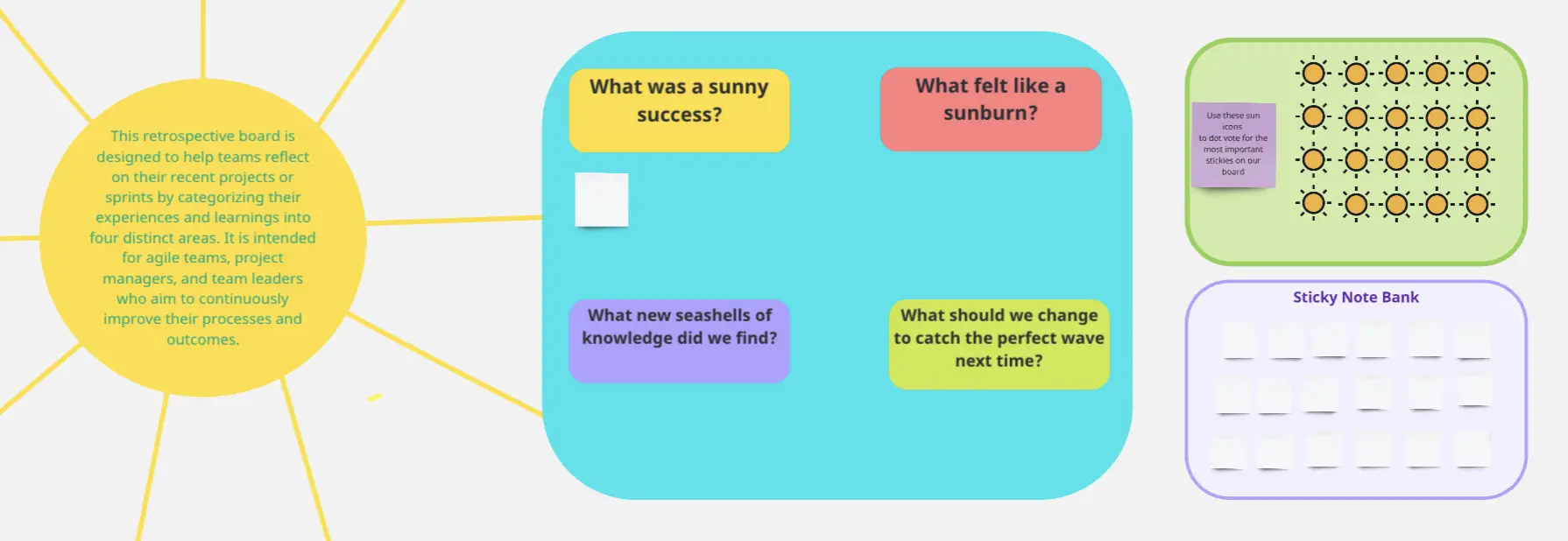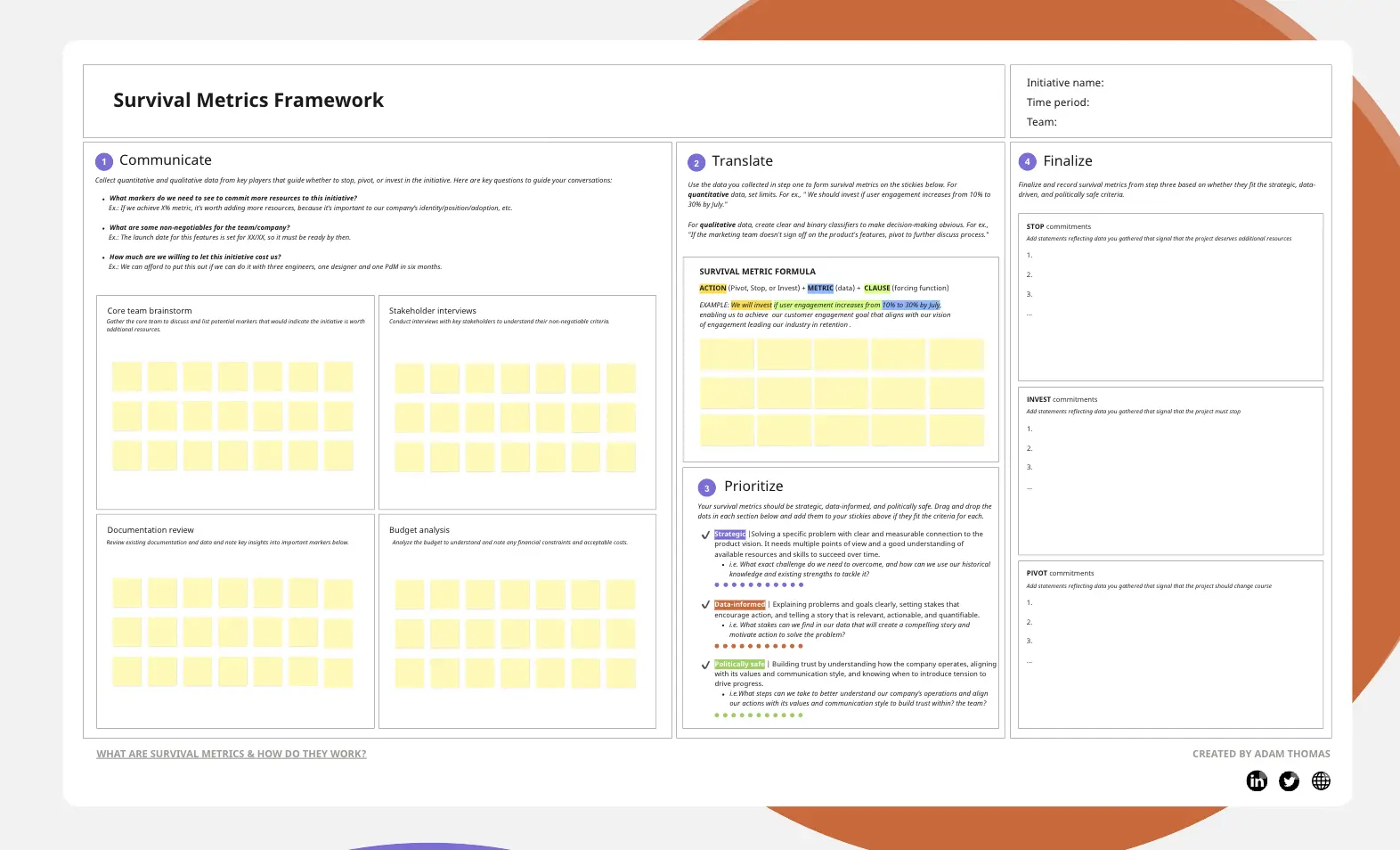The GQM (Goal, Question, Metric) with Adverse Impact Mapping board is designed to help teams systematically identify and mitigate potential negative consequences of their metrics and goals. This guide provides step-by-step instructions on how to effectively use the board and who will benefit the most from it.
Step-by-Step Instructions
Define Your Goal
Start by clearly defining specific objectives that align with your organizational priorities. Ensure these goals focus on measurable outcomes.
Formulate Questions
Develop questions that will help assess whether the goals are being met. These questions should guide data collection and clarify how to evaluate progress toward the goals.
Identify Metrics
Identify metrics that will provide data to answer your questions. Ensure these metrics are relevant and can be tracked consistently.
Analyze Adverse Impacts
Identify potential negative consequences of each metric on individuals and the organization. Consider both systemic and procedural factors.
Develop Recommendations
Create specific suggestions to minimize or prevent the identified adverse impacts. Ensure these recommendations are practical and targeted.
Implement and Track Resolutions
Add or modify goals, questions, and measures to address adverse impacts. Evaluate whether new measures answer new questions and whether new questions apply to the current goal or a new one.
Monitor and Adjust
Continuously evaluate the impact of implemented changes and adjust the map as necessary. Ensure ongoing alignment with organizational goals and minimize adverse effects.
Repeat the Process
Continue refining and adjusting goals, questions, and measures until your Adverse Impact Map is complete and effectively addresses all identified issues.
Who Will Benefit
This board is particularly useful for:
Project Managers: To ensure project goals are met without unintended negative consequences.
Team Leads: To balance delivering value with maintaining team morale and innovation.
Quality Assurance Teams: To identify and mitigate risks associated with metrics.
Organizational Leaders: To align team efforts with broader organizational priorities and ensure sustainable practices.
By following these steps, teams can systematically address adverse impacts and ensure their metrics drive positive, value-focused outcomes.






